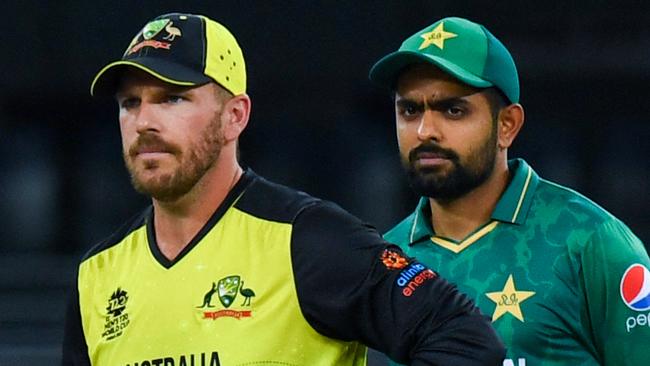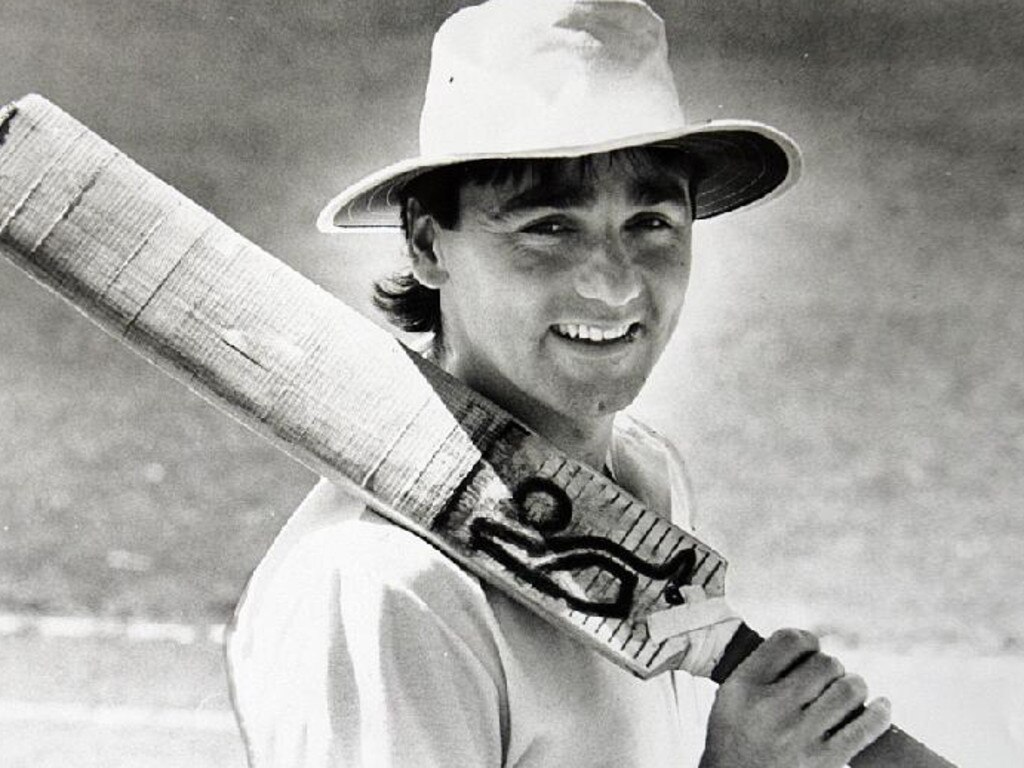Difficult to give a toss about side batting first
One of the confounding and also fun things about T20 is that every thesis is sound apart from all the exceptions.

Could Monday morning’s T20 World Cup final between Australia and New Zealand be decided by the fall of the coin?
Blimey, don’t ask me. One of the confounding and also fun things about T20 is that every thesis is sound apart from all the exceptions.
So let’s make a milder observation: This has, very clearly, been a chaser’s World Cup, culminating in both semi-finals. New Zealand needed 57 from 24 balls, Australia 81 from 44. Both won easily.
The team batting second won all Australia’s games; New Zealand posted wins batting first against only Namibia and Scotland. Sixteen of 44 games overall have been won by the team batting first, but only one of those involved two teams from the top eight, when India beat Afghanistan.
The relative success of setting and chasing has fluctuated over the history of T20, with chasing emerging as an advantage analogous to using the white pieces in chess.
The team batting second has won 58 per cent of the time in the last seven Indian Premier Leagues, 51.3 per cent of the time in the last six Big Bash Leagues.
But the effect may be growing more pronounced. In the last IPL, only five games involved victory margins fewer than six runs. If you can stay in touch until deep in a reply, in other words, you’re well positioned.
Catch all the ICC T20 World Cup action live & exclusive to Fox Cricket, available on Kayo. New to Kayo? Start your free trial today >
People joke about what would happen if the greyhound ever caught up with the electric rabbit. Maybe it looks like Matthew Wade hitting Shaheen Shah Afridi for those three sixes in the early hours of Friday morning.
There is, to be sure, a lot of noise around this signal. Start times, for example, can be surprisingly influential. The IPL is staged in India at the hottest time of the year, and the minority of day games are notoriously challenging to teams bowling first, who must chase when fatigued.
Then there is equatorial dew, which does not fall as reliably as the rain in Spain. A bit can cause the ball to skid on, making it easier to hit; a lot can soften and dampen the ball, making it harder to hit.
But it is access to power that shapes chasing, and has had the greatest impact on its psychology, T20 being a contest of confidences rather than forms.
Remember how we used to chase in one-day internationals, creeping up on targets gradually as though not to startle them?
Remember how Javed Miandad hitting a six to win the Austral-Asia Cup Final at Sharjah in 1986 it was a miracle?
Remember how Michael Bevan hitting a mere boundary off the last ball at the Sydney Cricket ground ten years later was regarded as the heist of all time?
Nothing dates so completely as what at the time looks absolutely up to the minute. Sixes provided Bevan with less than two per cent of his ODI runs; sixes provided Chris Gayle with almost 40 per cent of his T20I runs. And no team has made as much of musculature as Gayle’s West Indies.
In their excellent history of T20, Cricket 2.0, Tim Wigmore and Freddie Wilde describe what they regard as a breakthrough innings in the history of the format, in the first staging of the now-forgotten Champions League – so long ago now that the match predates the custom of naming every team after either fire or royalty.
On October 16, 2009, Trinidad & Tobago needed 80 from 42 balls against NSW in Hyderabad – basically Australia’s task on Friday morning. This came down to 51 off four overs – rather like New Zealand’s task against England.
With Brett Lee to bowl two of those overs, the task seemed impossible. But Kieron Pollard hit five sixes and three fours in nine balls from Moises Henriques to win the game with nine balls remaining.
Notably, Pollard did not hit a six or two then try bridging the rest of the gap in ones and twos. He set himself to hit everything out of the park, and had the skill and nerve to do so.
Only a little over two years since Bevan’s retirement, Pollard signified a completely new approach to chasing, and on that basis became the most expensive player at the next IPL auction. Mumbai Indians have never let him go.
It was a cue for others, with the West Indies’ apex achievement being to win the last T20 World Cup in the cascade of Carlos Brathwaite’s sixes
Perhaps, though, this much we already knew – confidence, even elan, with which teams chase upwards of two runs per ball, knowing how rapidly sixes can change an equation. The other factor at play in this T20 World Cup has been the challenge of ascertaining a par score, it being easier to shoot at a stationary target than a moving one.
The average score batting first has been 130. Only one team has made more than 200. Batters have been, at times, surprisingly circumspect, including in the semi-finals.
Perhaps because of the absence of Jason Roy, England were unusually cautious against New Zealand, being only 2-67 after 10; Pakistan’s captain Babar Azam then allowed Australia to whiz through its fifth bowler by the 10th over with 39 off 34 balls.
Finals have their own parameters and peculiarities. But with 11 of 12 matches at Dubai International Cricket Stadium in this tournament having been won by the team batting second, something special will be required to change that. Good luck skipper.






